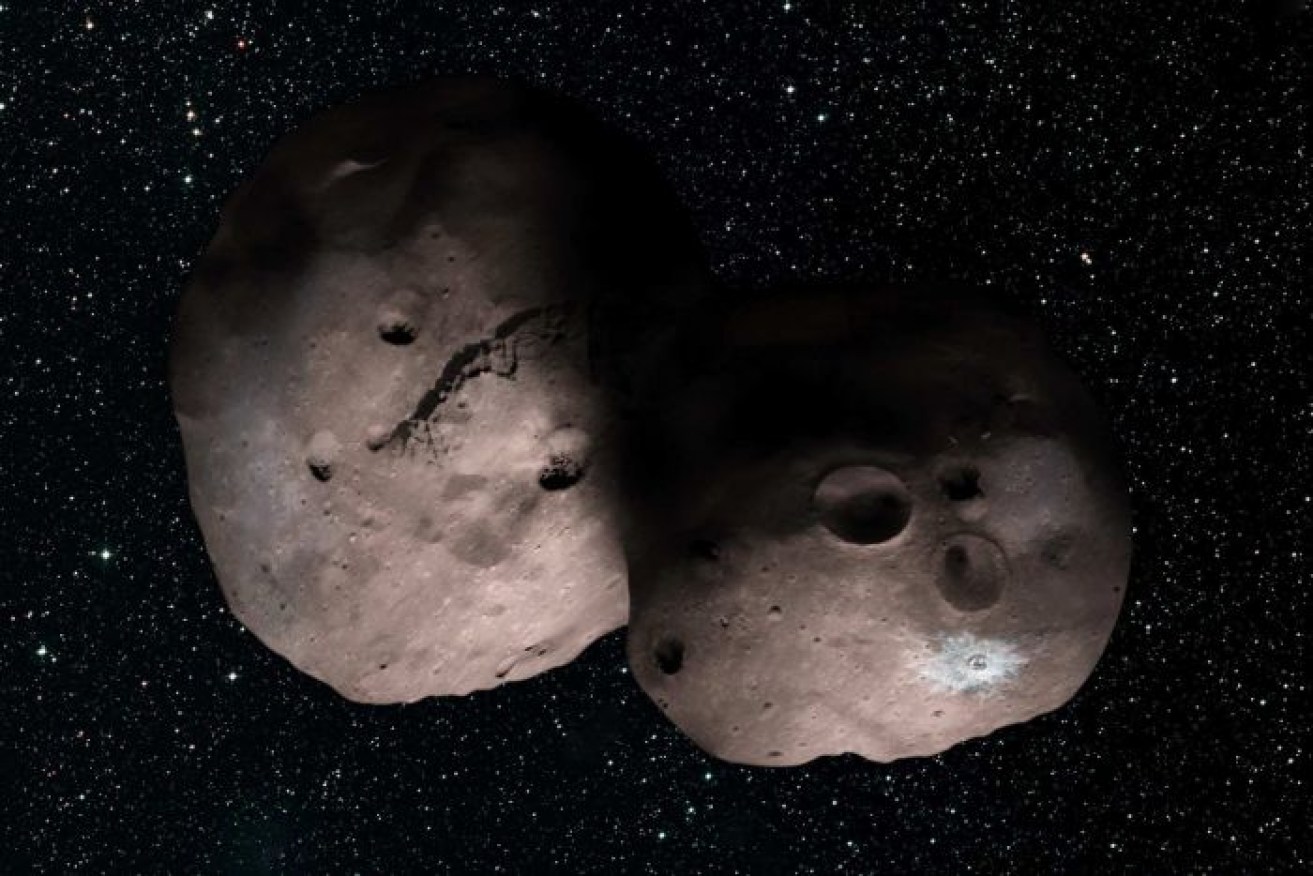NASA wants a better name for the most distant object ever explored

An artist's impression of what MU69 might look like. Photo: NASA/JHUAPL/SwRI/Alex Parker
The spacecraft New Horizons is on its way to another close encounter, with a mysterious object we have barely glimpsed.
The target is in the heart of the Kuiper Belt – the fringe of debris beyond our solar system’s familiar planets.
We know next to nothing about this rock and at the moment, it doesn’t even have a good name.
Based on how it was first spotted, by the Hubble Space Telescope, the object currently goes by (486958) 2014 MU69 – or MU69 for short.
On Wednesday, NASA launched a public naming competition, offering anyone around the world the chance to christen the most distant object ever explored.
Entries close on December 1 and the winner will be announced in January.
Dr Stern is the principal investigator of New Horizons, the little NASA probe that shot past Pluto in 2015 and completely upended our expectations of dwarf planets.
The spacecraft already has six billion kilometres on the clock and is now more than halfway to MU69, where it will arrive on New Year’s Day 2019.
“You’ve gotta really love delayed gratification on this mission,” Dr Stern said.
Two for the price of one
Even from the little we do know about it, MU69 is an intriguing destination.
For starters, as targets go, it’s not a big one. Whereas Pluto is about half the size of Australia, this thing would just about fit inside Canberra.
“[It’s] only about 30 kilometres across,” Dr Stern said.
“No one’s ever been to a world like this. It’s about 1000 times the mass of a typical comet and about 10,000 times less massive than Pluto.”
So far, our best information comes from chasing its faint shadow across the Earth with mobile telescopes, including SOFIA: an infrared telescope mounted on an aeroplane.
“It’s a very powerful technique where we can watch the target, MU69, pass in front of a star and make it wink out,” Dr Stern explains.
“And from the amount of time that it winks out, you can tell how big it is … and if you watch it wink out from multiple telescopes, in slightly different places with multiple lines of sight, you can trace out its shape.”
As seen from Argentina: The blinking of a star in this image is caused by MU69
A recent series of observations just like this, from SOFIA and a string of carefully positioned, portable telescopes in Argentina, delivered a big surprise: it’s actually two objects.
“MU69 appears to be a binary,” said Dr Stern, with obvious excitement.
“The two may be touching, or they may be orbiting each other. We’ll have to wait for the flyby to really know.








